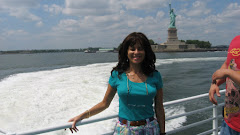
According to Michael Winkleman, a scholar on culture shock, “there are four distinct phases of culture shock that are experienced by virtually everyone who spends an extended period of time in a different culture.
1. The Honeymoon Phase
During this phase the newcomer romanticizes every aspect of the new culture. Everything appears to be new and exciting in the newcomer floats through life with an open mind. It is characterized by interest, excitement, euphoria, sleeplessness, positive expectations, and idealizations about the new culture. This phase is typically experienced by honeymooners, business people and tourists. They may remain in this phase, because they never truly live in the culture. Expats who spend a week or two, from time to time, may never move beyond this honeymoon phase as their stay might be confined to resorts, airports, or business meetings.
2. The Crises or Cultural Shock Phase
Once the novelty wears off, after a few days or weeks frustrations, helplessness, and even anger may set in as the new comer adjusts to differences between their new world and their old world. It is during this phase that the sojourner suffers from the classic symptoms of culture shock described in the previous post such as insomnia, hostility, paranoia, and isolation. They may begin to fantasize about returning home, call home frequently, become overly critical of their new environment, and sometimes question their decision for ever agreeing to come to this strange place.
I experienced and witnessed this entire process while spending a year abroad in a university in Normandie, France with 30 Americans.
3. The Adjustment and Gradual Recovery Phase
After a few more weeks or months, the new comer begins to feel a sense of belonging and appreciation for their new environment. They begin to feel comfortable navigating day-to-day situations, and they no longer react out of intolerance or arrogance to what they are experiencing. An entire pychic transformation takes hold of the sojourner.
According to Winkleman, “One develops problem-solving skills for dealing with the culture and begins to accept the culture’s ways with a positive attitude. The culture begins to make sense, and negative reactions and responses to the culture are reduced as one recognizes that problems are due to the inability to understand, accept, and adapt. An appreciation of the other culture begins to emerge and learning about it becomes a fun challenge. During the adjustment phase, the problems do not end, but one develops a positive attitude toward meeting the challenge of resolving the issues necessary to function in the new culture. Adjustment is slow, involving recurrent crises and readjustments.”
It is during this phase that one begins to become bicultural integrating aspects of their native culture with aspects of their new culture into their being.
4. The Adaptation, Resolution, or Acculturation Phase
According to L. Robert Kohls, “full recovery from culture shock will result in an ability to function in two cultures with confidence.”
The fourth stage is achieved as one develops stability in adapting and grows successful at resolving problems and managing the new culture. Although full assimilation is virtually impossible, one will acculturate and in the process, may undergo substantial personal transformation, leading to the development of a bicultural identity and the integration of new cultural aspects into one’s previous self-concept. Like a cucumber transitioning to a pickle, the sojourner in essence, becomes a new person.
When the expat reaches this phase, they will most definitely experience reverse culture shock (re-entry shock) upon their return home.
We will discuss Re-entry Shock in the next post.






.jpg)
.jpg)




No comments:
Post a Comment